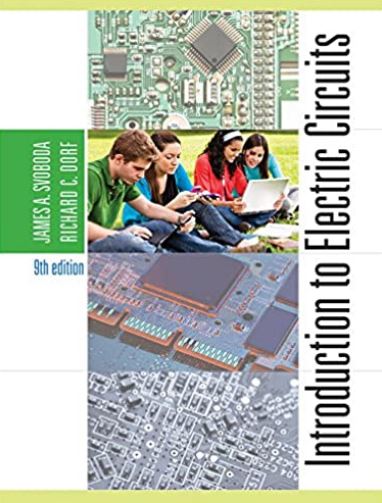Introduction To Electric Circuits 9th ed in PDF overview:
Preface of 978-1118477502 PDF:
The central theme of Introduction to Electric Circuits, 9th ed PDF, is the concept that electric circuits are part of the basic fabric of modern technology. Given this theme, we endeavor to show how the analysis and design of electric circuits are inseparably intertwined with the ability of the engineer to design complex electronic, communication, computer, and control systems as well as consumer products.
Approach and Organization of the eBook:
978-1118477502 eBook, is designed for a one- to three-term course in electric circuits or linear circuit analysis and is structured for maximum flexibility. The flowchart in Figure 1 demonstrates alternative chapter organizations that can accommodate different course outlines without disrupting continuity.
The presentation is geared to readers who are being exposed to the basic concepts of electric circuits for the first time, and the scope of the work is broad. Students should come to the course with the basic knowledge of differential and integral calculus.
What’s New in the 9th Ed of Introduction To Electric Circuits PDF:
Revisions to Improve Clarity of 978-1118477502 eBook:
Chapter 10, covering AC circuits, has been largely rewritten to improve clarity of exposition. In addition, revisions have been made through the text to improve clarity. Sometimes these revisions are small, involving sentences or paragraphs. Other larger revisions involved pages or even entire sections. Often these revisions involve examples. Consequently, the 9th edition contains 36 new examples.
More Problems in the PDF:
The 9th edition contains 180 new problems, bringing the total number of problems to more than 1,400.
This 9th edition uses a variety of problem types and they range in difficulty from simple to challenging,
including:
- Straightforward analysis problems.
- Analysis of complicated circuits.
- Simple design problems. (For example, given a circuit and the specified response, determine the
required RLC values.) - Compare and contrast, multipart problems that draw attention to similarities or differences between
two situations. - MATLAB and PSpice problems.
- Design problems. (Given some specifications, devise a circuit that satisfies those specifications.)
- How Can We Check . . . ? (Verify that a solution is indeed correct.)
About the Authors of the PDF eBook:
James A. Svoboda, is an associate professor of electrical and computer engineering at Clarkson University, where he teaches courses on topics such as circuits, electronics, and computer programming. He earned a PhD in electrical engineering
from the University of Wisconsin at Madison, an MS from the University of Colorado, and a BS from General Motors Institute, the author of Introduction To Electric Circuits 9th ed PDF.
Richard C. Dorf, professor of electrical and computer engineering at the University of California, Davis, teaches graduate and under-graduate courses in electrical engineering in the fields of circuits and control systems.
NOTE: The product only includes the eBook isbn 978-1118477502 introduction to electric circuits 9th ed in PDF. No access codes are included.






Reviews
There are no reviews yet.